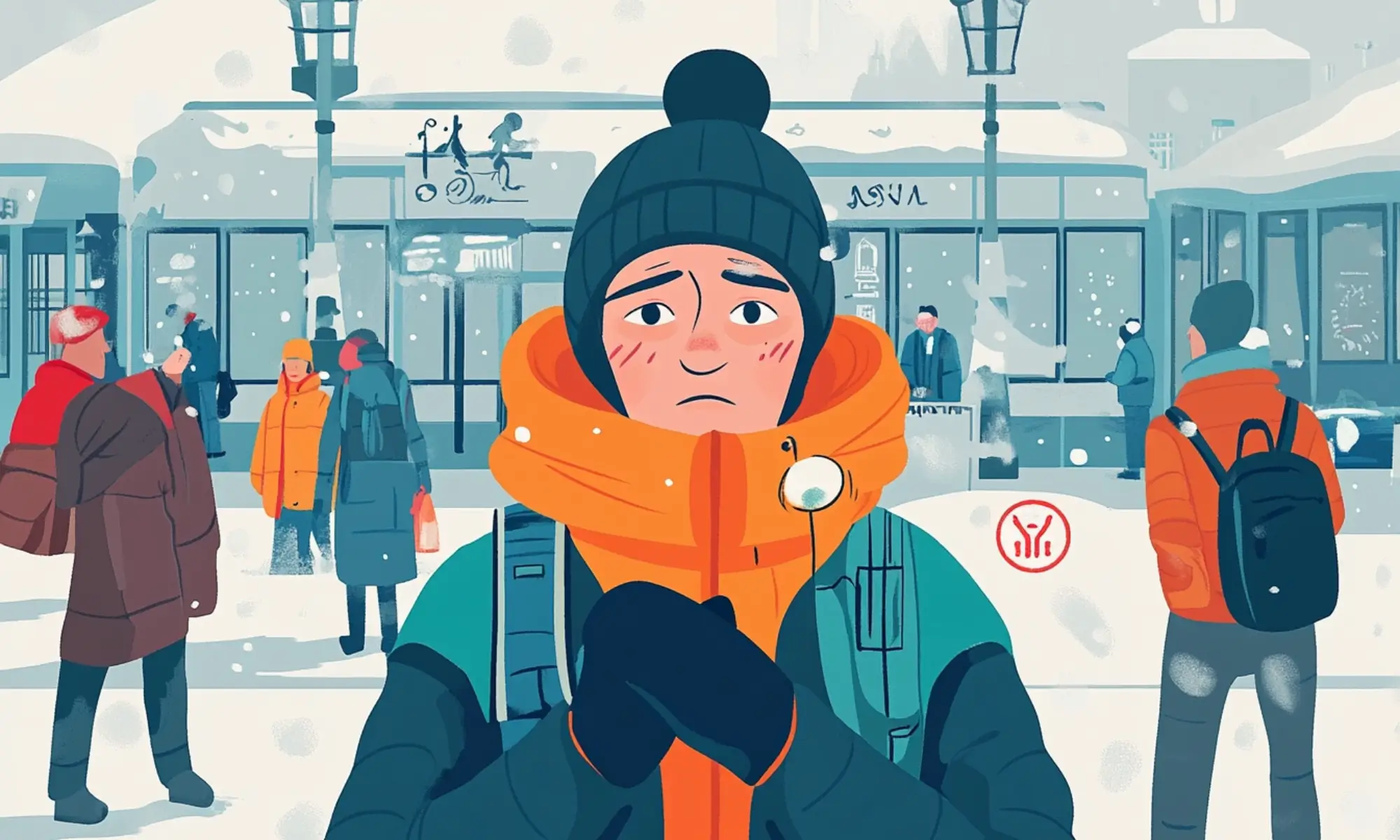As winter descends upon us, understanding the concept of wind chill and its associated hazards becomes crucial for anyone working outdoors or engaging in winter activities. Wind chill refers to the chilling effect of cold air combined with wind, which can significantly lower the perceived temperature and increase the risk of cold-related health issues such as frostbite and hypothermia.
In this blog, we will explore what wind chill is, highlight essential safety tips for staying protected in cold conditions, and provide a comprehensive toolbox talk to ensure that workers are well-informed and prepared to face the challenges posed by winter weather.
Whether you’re an outdoor worker, a winter sports enthusiast, or simply someone who braves the cold, this guide aims to enhance your safety and well-being throughout the season.
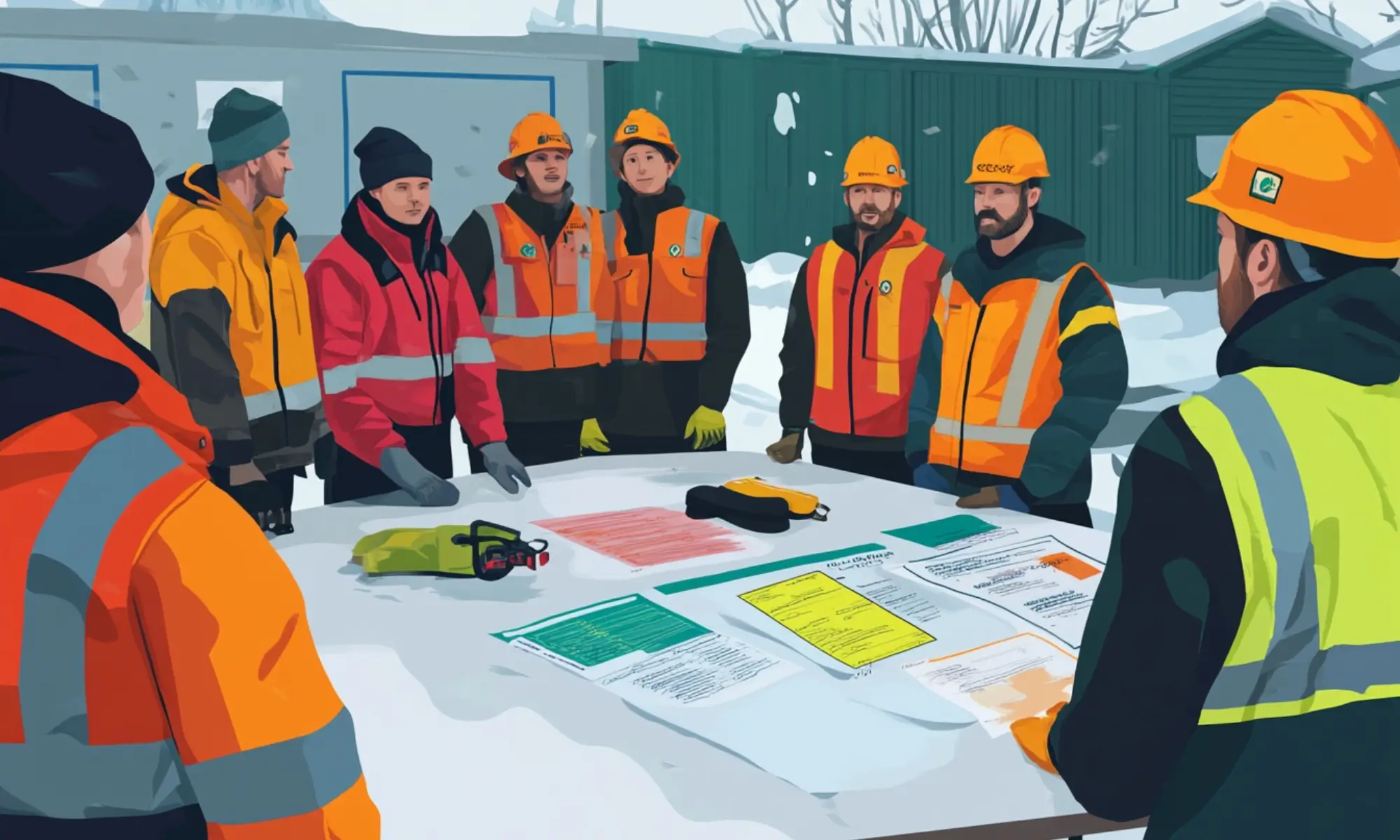
What is Wind Chill?
Wind chill is a measure of how cold it feels on the skin when air temperature and wind speed are combined. Often referred to as the “feels-like” temperature, wind chill reflects the body’s heat loss rate due to cold and wind exposure. As the wind blows, it strips away the thin layer of warm air surrounding your skin, making it feel much colder than the actual temperature. The stronger the wind, the greater the heat loss, and thus, the lower the wind chill temperature.
For example, if the temperature is 10°F (-12°C) with a 20 mph (32 km/h) wind, it may feel like -9°F (-23°C) due to the accelerated heat loss from your skin. Knowing how to calculate and interpret wind chill can be crucial for preparing for outdoor activities and ensuring safety in the cold.
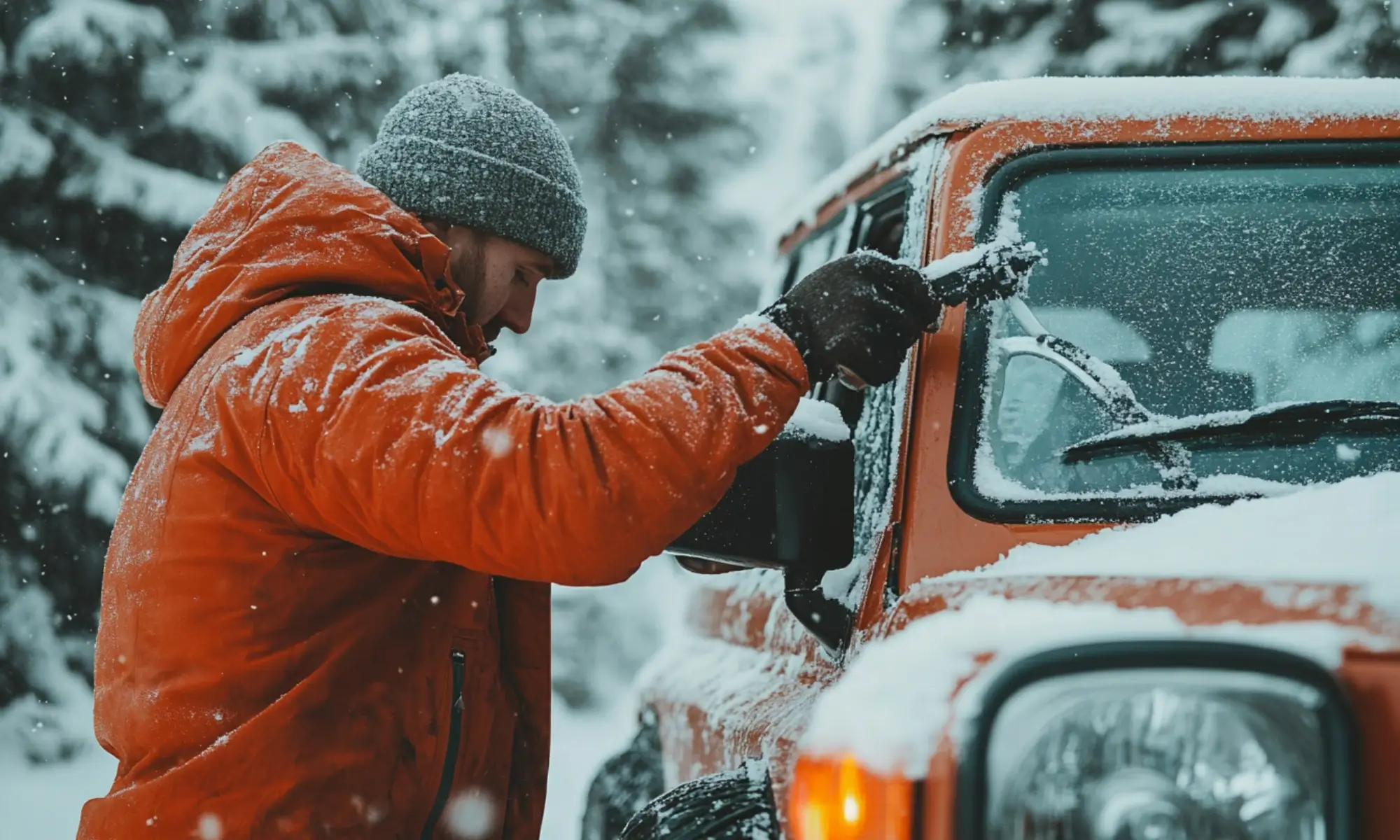
The Dangers of Wind Chill: Frostbite, Hypothermia, and More
The risk associated with wind chill goes beyond discomfort. Cold temperatures paired with strong winds can lead to several dangerous health conditions:
1. Frostbite
Frostbite occurs when body tissue freezes due to prolonged exposure to extreme cold. The condition primarily affects extremities like fingers, toes, earlobes, and the nose, where circulation is naturally limited. Wind chill accelerates frostbite by quickly removing the body’s warmth, and frostbite can set in within minutes at high wind chill levels.
Symptoms: Numbness, skin discoloration, tingling, and, in severe cases, blisters or blackened skin.
2. Hypothermia
Hypothermia happens when the body loses heat faster than it can generate, leading to a dangerously low core temperature (below 95°F/35°C). Even mildly cold temperatures can cause hypothermia if a person is wet or exposed to wind.
- Symptoms: Shivering, confusion, slurred speech, extreme fatigue, and lack of coordination.
- Important: Hypothermia can be life-threatening if untreated, making it essential to recognize and respond to symptoms quickly.
3. Trench Foot (Immersion Foot)
Though more common in wet, cold environments than in freezing temperatures alone, trench foot occurs when feet are exposed to damp and cold for long periods. It can lead to nerve damage and even tissue death.
Symptoms: Tingling, numbness, swelling, and discolored skin.
Wind Chill Chart and Safety Thresholds
To assess the risk level, refer to the wind chill chart provided by the National Weather Service. This chart shows the “feels-like” temperature based on the actual temperature and wind speed, helping to estimate frostbite onset times. Here’s a general safety guide:
- 0 to -9°F: Slight discomfort; dress warmly.
- -10 to -27°F: Uncomfortable; dress in layers, cover extremities, and keep active.
- -28 to -39°F: Increasing risk; cover all exposed skin, monitor for frostbite.
- -40 to -47°F: High risk; frostbite can occur within 5-10 minutes. Avoid prolonged exposure.
- -48°F and below: Extreme danger; stay indoors if possible.
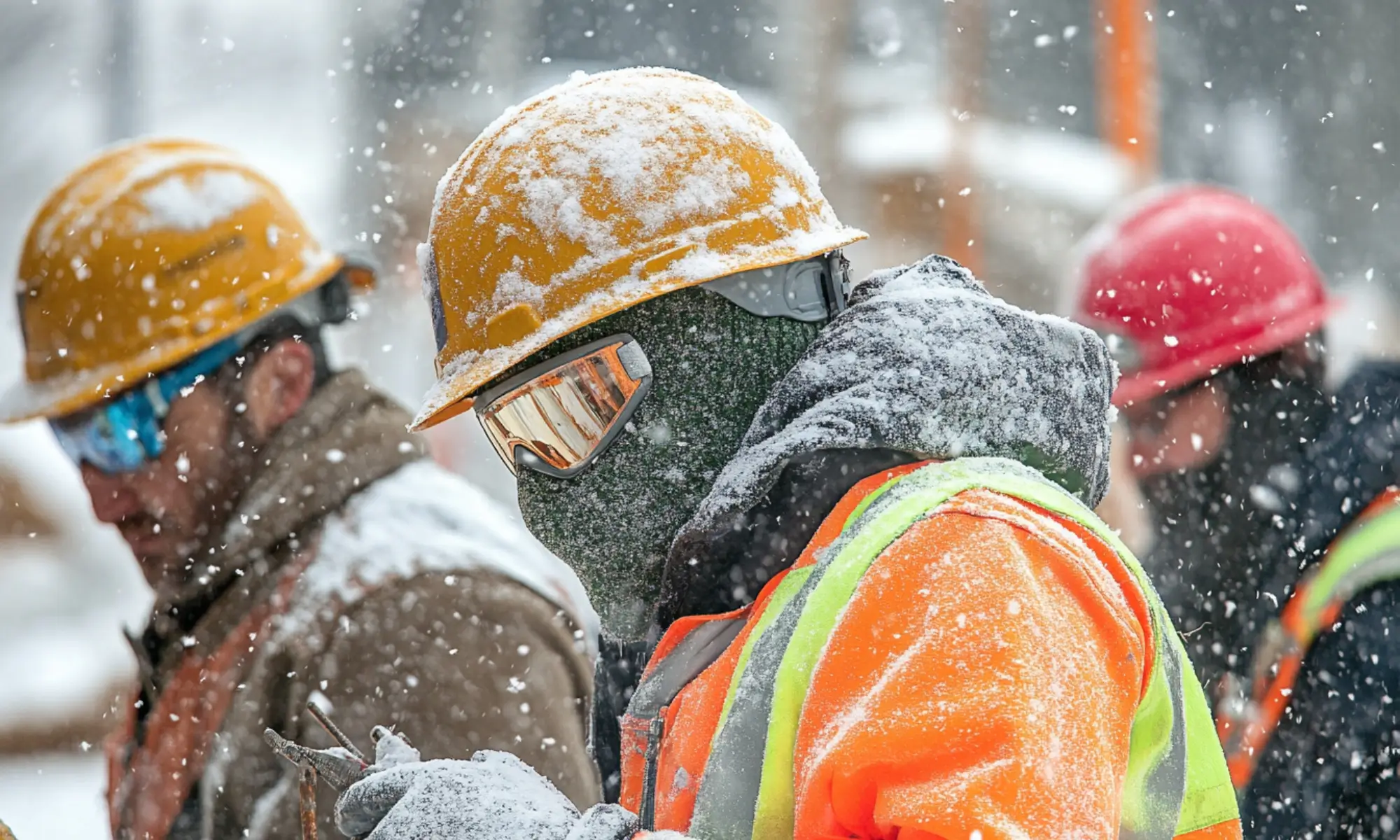
Best Practices for Staying Safe in Cold Weather
Cold weather can pose significant health risks, especially when combined with wind chill. To protect yourself and others from cold-related illnesses, here are some essential best practices:
1. Dress in Layers
Dressing in layers is crucial for maintaining warmth and comfort in cold weather. The base layer wicks moisture away from the skin, the insulating layer traps heat and the outer layer protects against wind and moisture. This approach allows for flexibility, as you can adjust layers based on your activity level and temperature changes.
- Base layer: Moisture-wicking fabric (e.g., merino wool, synthetic)
- Insulating layer: Fleece or down for warmth
- Outer layer: Windproof and waterproof to keep dry
2. Keep Extremities Covered
Exposed extremities are particularly susceptible to frostbite and cold-related injuries. Properly covering hands, feet, ears, and faces with insulated clothing can help prevent heat loss in these vulnerable areas. Use mittens, thermal socks, hats, and scarves to ensure complete protection.
- Insulated gloves or mittens
- Thermal socks
- Warm hat covering ears
- Scarf or neck gaiter
3. Stay Dry
Wet clothing can quickly lead to hypothermia and increased heat loss, making it essential to stay dry. Choose waterproof clothing and avoid cotton, which retains moisture. Always change out of wet clothes as soon as possible to maintain body warmth.
- Use waterproof and windproof fabrics
- Avoid cotton; opt for moisture-wicking materials
- Keep spare dry clothing available
4. Take Regular Breaks
Regular breaks in warm, sheltered areas help your body recover from cold exposure. These breaks are vital to prevent cold stress and allow your body to reheat, especially during strenuous activities. Ensure breaks are taken in warm environments like heated vehicles or shelters.
- Schedule frequent breaks
- Utilize heated vehicles or sheltered areas
- Allow the body to recover from cold exposure
5. Drink Warm Beverages
Staying hydrated with warm beverages can help maintain core body temperature and provide comfort. Hot drinks such as tea, hot chocolate, or warm water are ideal, but avoid caffeine and alcohol, which can lead to increased heat loss. Regularly sipping on warm liquids is a simple yet effective way to stay warm.
- Consume hot (non-caffeinated) beverages
- Options include hot chocolate, tea, or warm water
- Avoid caffeine and alcohol
6. Monitor Weather Conditions
Keeping an eye on weather forecasts and wind chill levels is essential for making informed decisions about outdoor activities. Be aware of changing conditions, and adjust your plans accordingly, especially during severe weather warnings. Staying informed allows for proactive safety measures.
- Check weather forecasts regularly
- Be aware of wind chill levels and advisories
- Adjust activities based on conditions
7. Watch for Warning Signs
Recognizing the symptoms of frostbite and hypothermia can be life-saving. Look for signs such as numbness, confusion, or extreme fatigue in yourself and others. If these symptoms appear, immediate action is necessary, including moving to a warm area and seeking medical assistance.
- Symptoms of frostbite: numbness, tingling, discoloration
- Symptoms of hypothermia: confusion, slurred speech, extreme fatigue
- Act immediately if symptoms are present
8. Stay Active
Light physical activity helps generate body heat and maintain warmth. However, it’s essential to balance activity to avoid sweating, which can lead to rapid heat loss. Staying active encourages good circulation without overexerting yourself.
- Engage in light physical activity
- Avoid sweating to prevent heat loss
- Promote circulation to maintain warmth
9. Plan for Emergencies
Preparing for emergencies is crucial during winter months when severe weather can strike. Keep a well-stocked emergency kit with essentials like first aid supplies, extra blankets, and non-perishable food items. This preparation ensures you can handle unexpected situations effectively.
- Maintain an emergency kit with food, water, and blankets
- Include first aid supplies and flashlights
- Have a plan for unexpected severe weather
10. Be Aware of Others
Looking out for coworkers and peers is essential in cold-weather environments. Monitoring others for signs of cold stress can help prevent serious health issues. Encourage open communication about how everyone feels in the cold and ensure safety measures are followed.
- Check-in on coworkers frequently
- Monitor for symptoms of cold-related issues
- Encourage a team approach to safety
Adhering to these best practices can significantly reduce the risks associated with cold weather exposure and maintain a safer environment for yourself and others during the winter months.
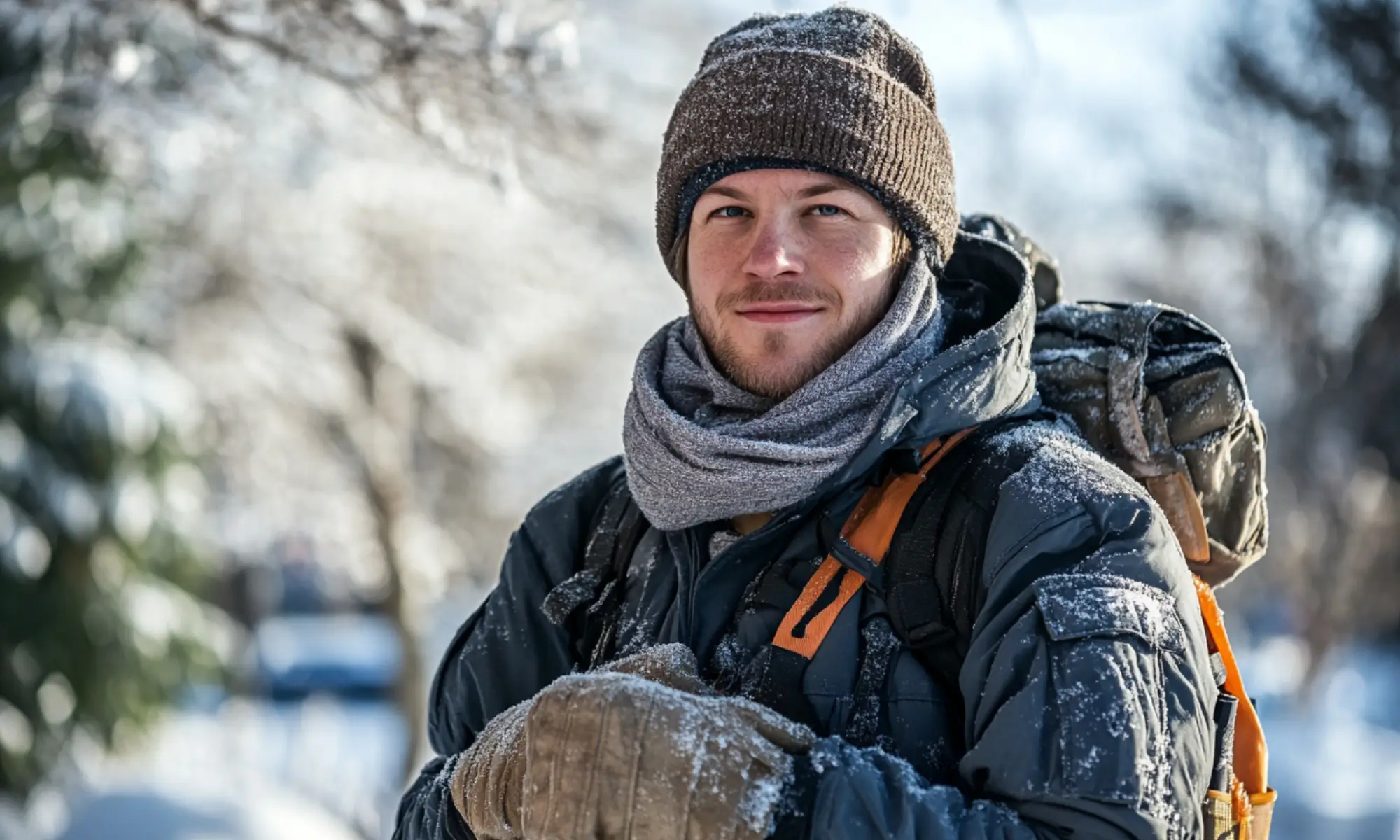
Cold Weather Toolbox Talk: What to Discuss
A toolbox talk on cold weather safety is essential to preparing your team for the challenges posed by winter conditions. These discussions provide a platform for educating workers about the hazards associated with cold weather, promoting awareness, and sharing practical safety measures. Here are key points to cover during a cold weather toolbox talk:
Recognize Wind Chill Hazards
Understanding the concept of wind chill and its impact on health is critical. Discuss how wind chill can significantly lower the “feels-like” temperature, increasing the risk of frostbite and hypothermia. Provide information on how to read wind chill charts and recognize when conditions become dangerous.
- Explain the difference between actual temperature and wind chill
- Share wind chill charts and frostbite onset times
- Discuss the dangers of prolonged exposure to cold
Identify Symptoms of Cold-Related Illnesses
Educating workers on the signs and symptoms of frostbite, hypothermia, and trench foot is essential for early recognition and intervention. Encourage team members to watch for symptoms in themselves and others, fostering a culture of care and vigilance.
- Symptoms of frostbite: numbness, discoloration, tingling
- Symptoms of hypothermia: confusion, extreme fatigue, slurred speech
- Discuss signs of trench foot: tingling, pain, swelling
Emphasize the Importance of Dressing Properly
Proper clothing is one of the first lines of defense against cold weather hazards. Discuss the principles of layering clothing, the importance of keeping extremities covered, and how to choose suitable materials. Provide guidance on how to layer effectively to maintain warmth and comfort.
- Discuss the three layers: base, insulation, and outer
- Importance of covering hands, feet, head, and face
- Tips for choosing moisture-wicking and insulating materials
Review Breaks and Hydration Strategies
Encourage regular breaks in warm areas to allow body temperatures to recover. Discuss the need to stay hydrated, even in cold weather, and how warm beverages can help maintain core temperature. Highlight the importance of taking scheduled breaks to prevent cold stress.
- Schedule frequent breaks in heated areas
- Encourage drinking warm (non-caffeinated) beverages
- Discuss signs of dehydration in cold weather
Establish Emergency Procedures
Make sure all team members are aware of emergency procedures in case of severe weather or if someone exhibits signs of cold-related illness. Discuss the steps to take when responding to frostbite or hypothermia and ensure everyone knows how to contact emergency services if needed.
- Outline emergency response steps for frostbite and hypothermia
- Ensure everyone knows the location of first aid kits and emergency contacts
- Discuss the importance of having a communication plan in emergencies
Encourage Team Awareness and Support
Foster a culture where workers feel comfortable discussing their concerns and monitoring each other’s well-being. Encourage team members to look out for one another, especially in harsh conditions, and to report any issues to a supervisor immediately.
- Promote an environment of support and communication
- Encourage team members to check in on each other
- Discuss the importance of reporting symptoms or concerns promptly
Reiterate the Importance of Following Safety Protocols
Remind everyone to adhere to established safety protocols and guidelines for working in cold weather. Discuss the importance of not working alone in extreme conditions and having a buddy system to ensure safety.
- Review company policies and safety protocols for cold weather
- Encourage the use of a buddy system to monitor each other
- Discuss the importance of following safety equipment guidelines
Review Equipment and Vehicle Preparedness
Discuss the importance of ensuring that all equipment and vehicles are ready for winter conditions. This includes checking that heaters work properly, that vehicles are winterized, and that emergency supplies are stocked. Proper preparation can prevent accidents and ensure safety in the field.
- Ensure vehicles are winterized and equipped for cold weather
- Check that all equipment is functioning properly in cold conditions
- Discuss maintaining an emergency kit in vehicles and work areas
Addressing these key points during a cold weather toolbox talk can enhance your team’s awareness of the risks associated with cold weather, promote safety practices, and ultimately reduce the likelihood of cold-related incidents in the workplace.
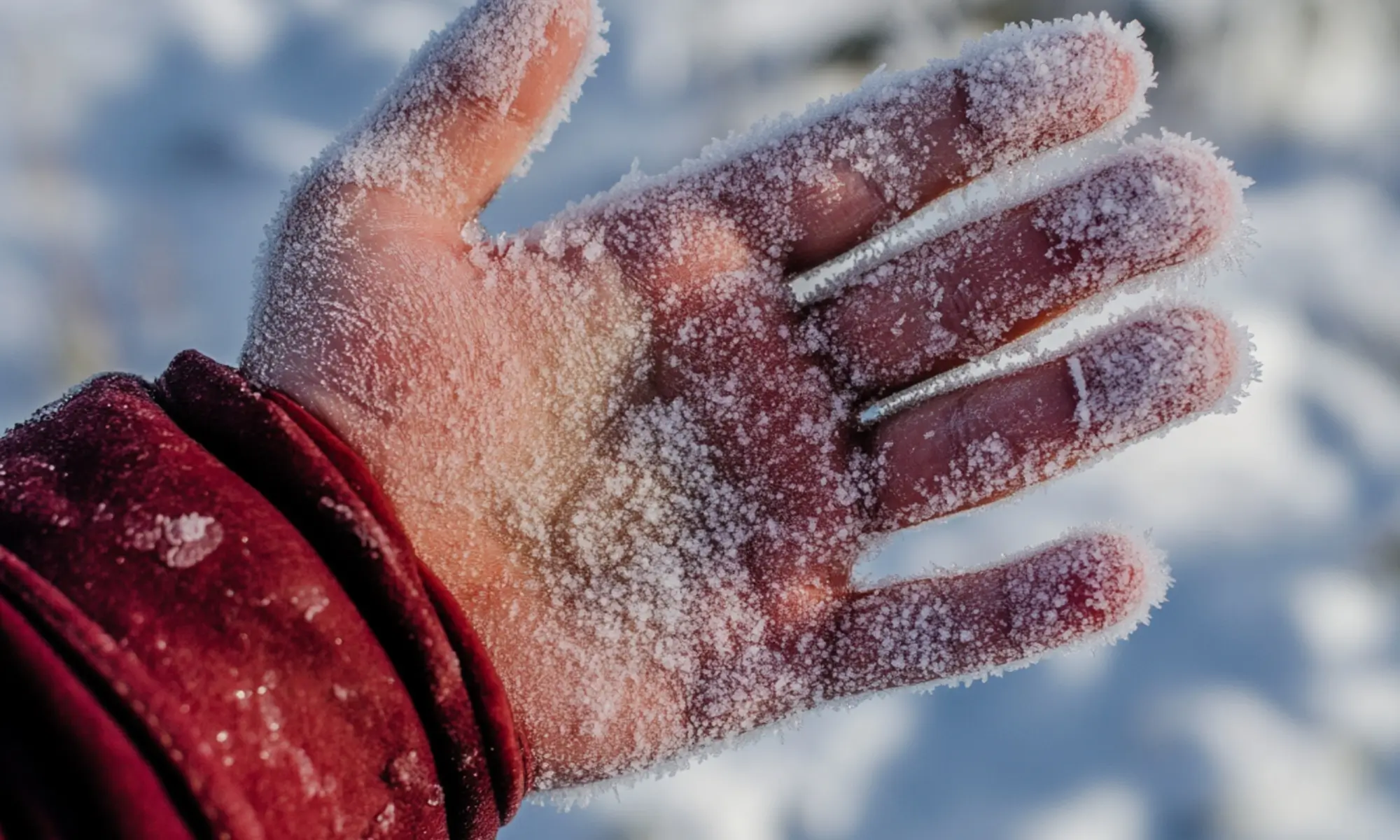
Preparing for Winter: Additional Safety Tips
Preparing for the unique challenges that cold weather brings is crucial as winter approaches. Proper preparation can prevent accidents, injuries, and health issues associated with low temperatures. Here are additional safety tips to ensure you and your team are ready for the winter months:
Winterize Your Home
Take proactive measures to ensure your home is safe and comfortable during the winter. This includes checking insulation, sealing drafts, and preparing heating systems. Regular maintenance of your heating sources will help prevent breakdowns during cold spells.
- Inspect and clean heating systems, furnaces, and chimneys.
- Seal windows and doors to prevent drafts.
- Insulate pipes to prevent freezing.
Stock Emergency Supplies
Being prepared for emergencies is essential during winter, especially if storms lead to power outages or road closures. Assemble a disaster supply kit that includes essential items for survival.
- Keep a three-day supply of food and water per person.
- Include a flashlight, batteries, and a battery-powered or hand-crank radio.
- Store blankets, warm clothing, and a first aid kit.
Prepare Your Vehicle
Ensure your vehicle is winter-ready to handle adverse weather conditions. Regular maintenance and the right supplies can help you stay safe while traveling in cold weather.
- Check tire pressure and tread; consider winter tires if necessary.
- Keep an emergency kit with blankets, food, water, and a shovel in your vehicle.
- Ensure your windshield wipers are functioning well, and use winter-grade windshield fluid.
Practice Safe Driving Habits
Winter driving conditions can be hazardous due to snow, ice, and reduced visibility. Being prepared and adjusting your driving habits can help prevent accidents.
- Slow down and increase your following distance in bad weather.
- Use headlights in low visibility conditions and when snow is falling.
- Avoid sudden maneuvers and brake gently to maintain control.
Keep Pets Safe
Cold weather can be particularly challenging for pets, so take steps to protect their well-being during winter. Provide adequate shelter and ensure they have access to non-frozen water.
- Bring pets indoors during extremely cold weather.
- Provide insulated shelter for outdoor animals, with plenty of bedding.
- Monitor outdoor time to prevent frostbite and hypothermia.
Be Aware of Carbon Monoxide Risks
With increased use of heating systems, the risk of carbon monoxide (CO) poisoning also rises. Install carbon monoxide detectors and be mindful of the symptoms of CO exposure.
- Install CO detectors on every level of your home and check batteries regularly.
- Never use gas stoves or generators indoors.
- Recognize symptoms of CO poisoning: headache, dizziness, confusion, and nausea.
Plan for Winter Activities
If you engage in winter sports or outdoor activities, plan ahead to ensure safety. Check weather conditions, wear appropriate gear, and know your physical limits.
- Dress appropriately for the activity, ensuring all body parts are covered.
- Stay hydrated and take breaks to prevent exhaustion.
- Be aware of the risks associated with specific activities, such as avalanches in mountainous areas.
Educate Others
Share winter safety tips with family, friends, and coworkers to promote awareness and preparedness. Education can significantly reduce the risk of accidents and health issues.
- Host safety talks or workshops about cold weather hazards.
- Distribute informational materials on winter safety practices.
- Encourage open discussions about concerns and safety measures.
By implementing these additional safety tips, you can better prepare for the winter months, ensuring a safer environment for yourself, your family, and your colleagues. Taking the time to plan and prepare can make a significant difference in navigating winter’s challenges.
Conclusion
Understanding wind chill and its potential hazards is essential for staying safe during cold months. Workers and outdoor enthusiasts can stay protected in winter conditions by recognizing the risks of frostbite, hypothermia, and trench foot and following safety protocols. Remember to dress in layers, monitor each other for symptoms, and stay informed about changing weather conditions. With these precautions, you can safely navigate the cold and minimize the impact of wind chill on your health and well-being.
Stay safe, stay warm, and stay prepared this winter!

